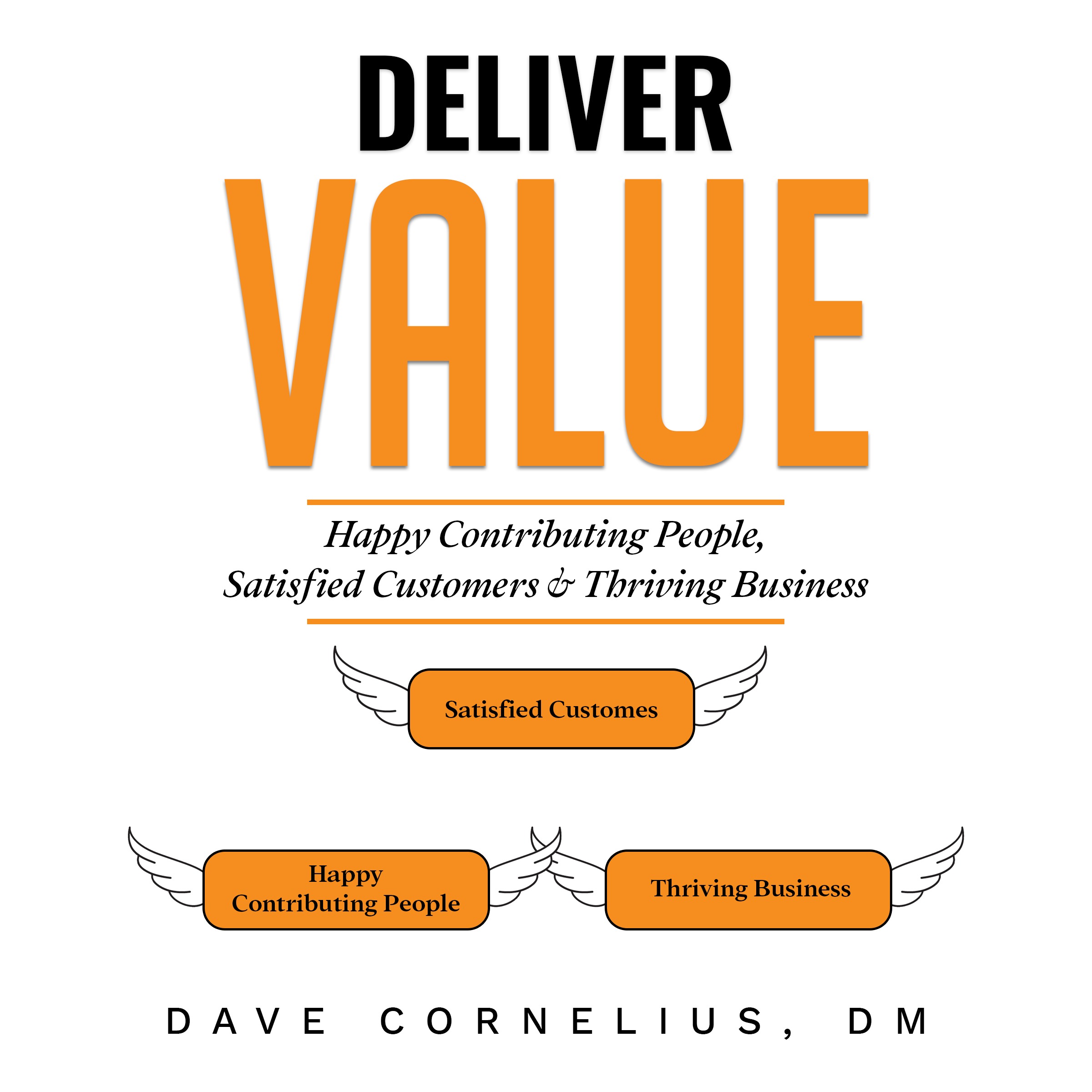Deliver Value: The best businesses in the world deliver value promised to their customers in a way that surpasses the customer's expectations. Customers like to get the benefits of their purchases quickly, reliably, and consistently. Value is giving something of merit to others that is good or helpful. One context is value to the customer. Businesses are sensitive to their customers’ needs. They want to give the customer what they want so that customers will pay for services and products.
Happy Contributing People: Happy contributing people frequently possess qualities like ambition, competence, trustworthiness, and reverence in their foundation. The focus is on creating an atmosphere where individuals may flourish within and around the business so they can be content contributing members of society. Customers and partners are examples of those outside the corporation who are crucial to the success of your company and its capacity to flourish in the context of business. If you make them happy, you can expect positive things. Having happy contributing people in your organization is critical to sustainable and increased customer satisfaction.
Satisfied Customers: The more satisfied customers a business creates, the more likely it is that those customers will purchase from the company again. Satisfied customers also increase the likelihood that they'll tell others about what you do, improving your reputation and bringing in even more potential customers. Customers want what they want now and have a short memory about what value was delivered. The understanding of the customer job to be done is the beginning of the journey to come close to having satisfied customers. Helping customers achieve their intended goals with the product or service purchased creates value for customers that increases customer loyalty outcomes such as retention, growth, and advocacy. Customer behaviors are triggered by satisfying their unmet needs, which often leads to greater loyalty and support for the organization.
Thriving Business: Successful businesses satisfy their customers most of the time in the midst of a changing environment. Unsuccessful businesses fail to make their customers happy, lose them, and eventually fail. A Thriving business satisfies unmet customer needs. A thriving business always has paying clients. These companies expand and face obstacles, yet they persevere. A successful firm depends on happy contributing employees, satisfied clients, and a clear sense of direction that is in line with the unmet demands of the clientele. By seeing the client through an empathic prism, linking with the pain endured and benefits wanted, the organization's teams and stakeholders can take advantage of the possibilities.
Resilient People: Resilient people always react strategically to challenges and opportunities by finding a way ahead in both easy and challenging circumstances. A superpower is added to resilient people's self-organization and innovation skills when they have a strong desire to exercise agility, which helps create happy customers and a successful business. Resilient people demonstrate specific habits that manifest effective responses to failures. The habits include 1) know their purpose, 2) work and live independently, 3) have a supportive coalition, 5) be positive about the present and future, 6) turn lemons into lemonade - by shifting adversities into growth opportunities, and 7) practice self-care.
Future of Work: The future of work will be shaped by automation and artificial intelligence (AI) that will play an important part in the mix of people, machines, and algorithms that enables the organization to be more effective. As this hypothesis is being played out now there will be future innovations that are yet to be realized. The future of work is going to be more hybrid, collaborative, and automated.
The future of work is also about people working together as a distributed team or co-collaborators to produce an output or outcome. People will seek opportunities to contribute and use their abilities to perform at a high level wherever they choose to live. Technology and internet access have allowed many people to continue their jobs at home during the pandemic, but not everyone has this option.
Business Agility: Agility is an organization’s ability to harness changes for its competitive advantage. — Ken Schwaber
The idea of practicing agility throughout the entire organization is a new phenomenon and is gaining traction in organizations of varying sizes. Business agility is the term used to describe the ability to optimize and align organizational missions across multiple teams of people performing important functions to enable the business to thrive. Adaptive transformation is the response to internal needs that aims to change the status quo of ways of working, mindsets, and leadership.
Business agility refers to optimizing the entire company as necessary and not limiting the ability to inspect and adapt to only the IT organization. The business agility practice is a mindset, a set of values, guiding principles, and frameworks to deliver small increments of value for faster customer feedback.
Adopting a lean-agile mentality is crucial for responding to challenges and developing solutions that satisfy unmet consumer demands.
Successful Business Strategies: A thriving business is a successful business because of strategies that help to define the path forward in a specific market or industry. Businesses that are aligned with their goals use a strategic problem-solving approach that is focused on satisfying the unmet requirements of their consumers. By keeping the number of active strategic projects between two and five, you can focus your efforts and prevent wasteful use of people and limited resources. It is for this reason that it is crucial to identify the strategic issue that requires our attention most. The greatest result will come from identifying the strategic issue and possibilities for exploring solutions. The results are often happy contributing employees, satisfied clients, and a successful company.
Generative Agile Leadership (GAL): Assigned and emergent leaders must shift their leadership styles to be generative agile leaders.
GAL values provide a set of beliefs to guide the people directly entrusted to our care and amplify our influence with others. The GAL value system combines the continual learning and performance-oriented context to create a continual learning and high-performing organization. More specifically, it develops an environment that enables continual learning and high-performing teams. Generative agile leadership enables a culture that gives birth to organizations and human beings that demonstrate the ability to achieve amazing outcomes during the VUCA times or normal times.
Organizational Culture: The organizational culture of consumer obsession is important. To get insights that enable the creation of a long-term engagement with clients, it will be necessary to employ every instrument and technique at your disposal to connect with customers. The organization will develop the economic value that enhances a key component of the customer's life and establish the company in a new context thanks to the overflowing customer collaboration. The success of the client in attaining their intended goals is the focus of customer obsession.
Generative cultures enable diversity, equity, inclusion, and belonging. The generative environment’s generosity extends beyond the doors of the organization and into the local and global community. Developing a generative business culture is fundamental to frictionless operations and effectively collaborating with people to succeed in a highly competitive world.
Leadership and Management: Management is about human beings. Its task is to make people capable of joint performance, to make their strengths effective and their weaknesses irrelevant. – Peter Drucker, management thought leader and author
Management and leadership should focus on providing an environment that enables the people inside and outside of the organization to thrive so they may be happy contributing people. Organizational Leaders want resilient people that are able to respond to challenges and find opportunities when it appears there are none to be found. The leadership strategy is to increase brand loyalty to retain customers.
Organizational Behavior: The organization behavior is driven by the type of leadership and the culture cultivated by the leaders and people. Organizational behavior describes how people interact with one another inside of an organization.
The interactions subsequently influence how the organization itself behaves and how well it performs.
Demonstrating a high degree of empathy for customers will provide clarity to see and solve problems that previously might never have been noticed. Developing a customer-obsessed culture involves turning customers into fans who believe in, advocate for, and keep coming back to your business. Shifting the organization to care about its people, customers, and community will demonstrate a supportive model versus an autocratic model.






